|

By Ian Cushway, 25th March 2020
What's wrong with your wiring?
Understanding and fixing your car's electrics
A car's electrical system can often be the first thing to fail when a vehicle reaches a certain age. All too often poor earths, rubbish connections, brittle or broken wires and faulty electrical components can spoil the fun of running around in a classic and have you going around in circles trying to figure out what's wrong.
However, you shouldn't let the prospect of tackling your car's electrics put you in a spin because it's not the 'dark art' you feared. In fact, armed with a wiring diagram and a simple test meter, even a complete novice can diagnose simple faults and get things working again in no time. All it takes is a bit of detective work, common sense and the ability to work methodically to solve most electrical glitches.
Sure, on newer cars it gets a bit more involved, but there's still things you may be able to do. But remember, if you feel you're getting out of your depth call in a car electrician before you do more harm than good.
Please note; Wire colouring varies model to model, so please check the specific colours for your car and consider ours as examples.
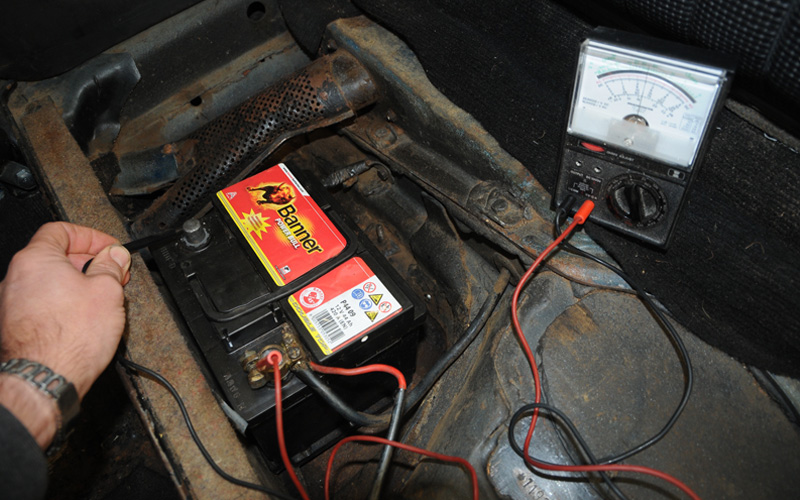
Credit: Photo by Ian Cushway 2020
Bright idea
Before you start, get yourself a simple test meter so you can check for current and continuity. They're cheap as chips to buy, but if you're only doing the real basics you can make do by with our simple circuit tester If you're getting a healthy 6v/12v coming through, the bulb will light up – in which case there's likely to be a fault with the component itself. If it doesn't illuminate then the problem lies elsewhere. See, we told you this would be straightforward!
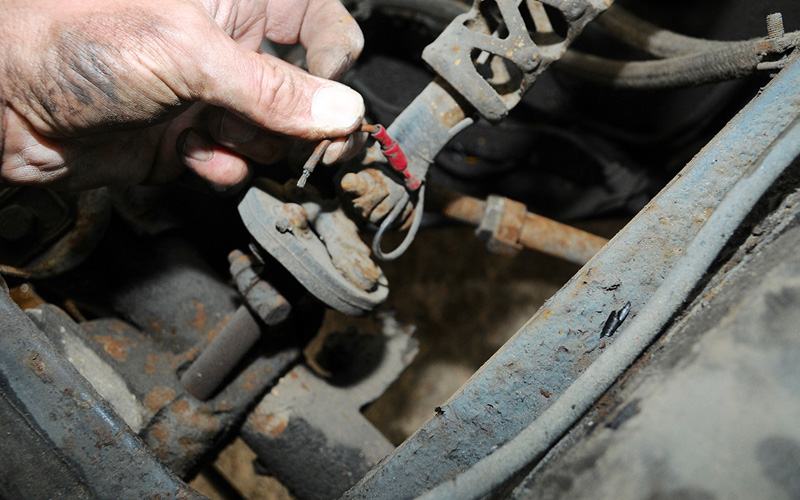
Credit: Photo by Ian Cushway 2020
Circuit tracing
Okay, time now to explain the basics. A car’s electrical system is divided into different circuits, the main ones being for the ignition, starter, lighting and auxiliary components. A fuse (that will blow if the circuit is overloaded or a short occurs) protects each circuit as well as many of the car’s individual electrical components. Therefore, locating and inspecting the correct fuse should be the first course of any action if something stops working. Don't assume just replacing the fuse will solve the problem, though. It's blowing for a reason, so you'll need to do a bit of detective work to find the short or faulty component that's causing the issue.
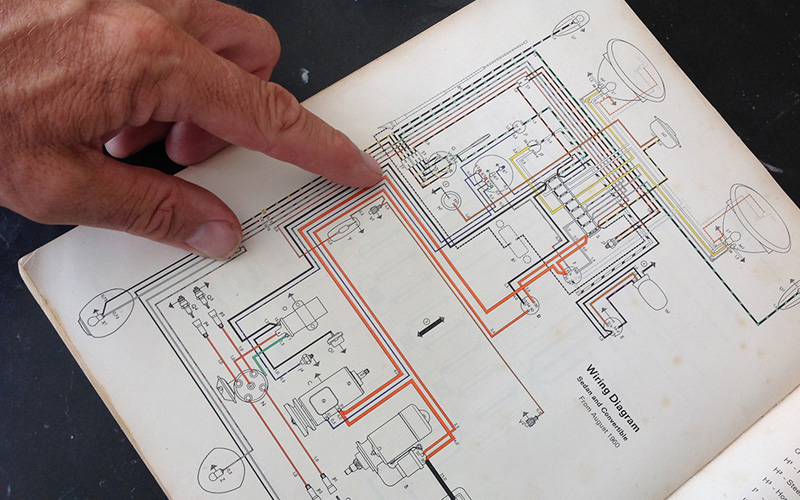
Credit: Photo by Ian Cushway 2020
Get the picture
Wires travel through a car within a main wiring harness or loom, covered with either cloth or plastic, which then divides into smaller runs to power the ignition system, lights, interior and instruments etc. Individual cables are colour coded to allow easy identification of the different circuits when repairs are necessary.
A circuit diagram will help you understand what wires go where and will come in useful when it comes to tracing faults. The best ones will be in colour, so you can identify the different wires more easily. You'll quickly learn as you go along what colour wires do what; brown is commonly earth, red or black a power feed. The symbols, numbers and colours on these charts are universal, so once you’ve got hold of a circuit diagram from a workshop manual or club technical officer, you’ll get a better understanding of how everything is wired up.

Credit: Photo by Moss Europe Ltd
Power to the people
When tracing wiring issues, start checking at the battery or fuse box and trace the cable to the component that's not working properly. Common faults on older cars are usually down to corroded contacts, a defective switch or a poor earth. Manufacturers used the car's steel bodywork as an earth to save running individual wiring to each component, so an earth comes from an earth point on the body nearer to it, or even via a mounting bracket. If this connection is rusty, then it won't provide a good earth and there won't be a complete circuit back to the battery. Use a good crimping tool, like our professional ratchet pliers to make good dodgy fittings.
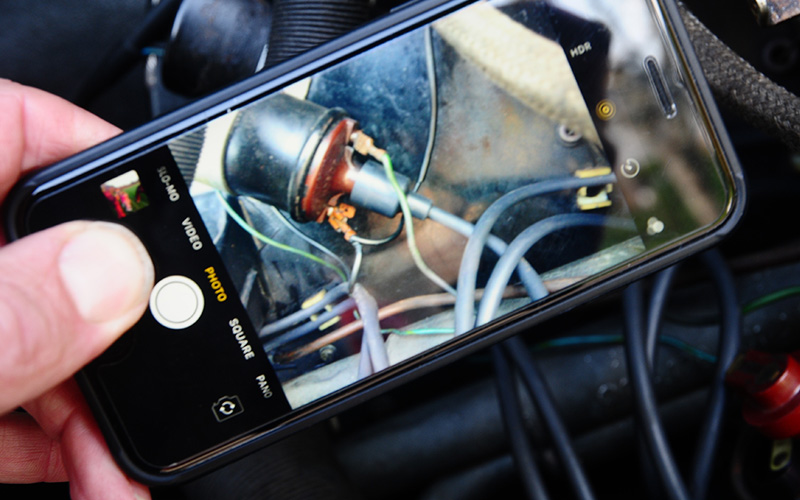
Credit: Photo by Ian Cushway 2020
Top marks
If a simple test reveals that a component has failed, don't just yank off the wire connections to it. Instead, either take a photo on your phone or mark up the wires so you know which wire goes where. It will help when you fit the replacement.
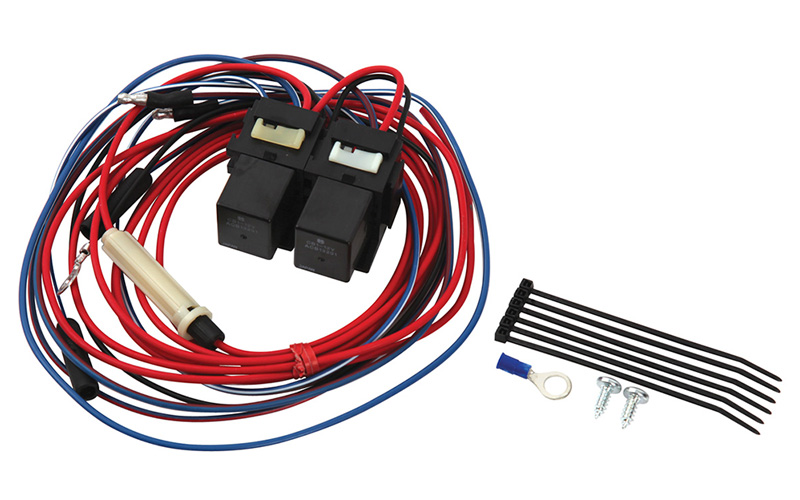
Credit: Photo by Moss Europe Ltd
Relay event
You've probably heard the term, but what is a relay? Well, they are fitted wherever a heavy load is required, such as for the headlight bulbs, and allows a lighter thickness of wire to be used between the switch and the relay. This prevents overheating and a shorter run of thicker wire is then used between the relay and the dip and main beams. Relays are also used in horn circuits and should always be fitted to auxiliaries that take a heavy load, such as fog/spot lamps, electric window winders, central locking and heated rear windows. Again, if something stops working, replacing the relay might prove a simple solution.
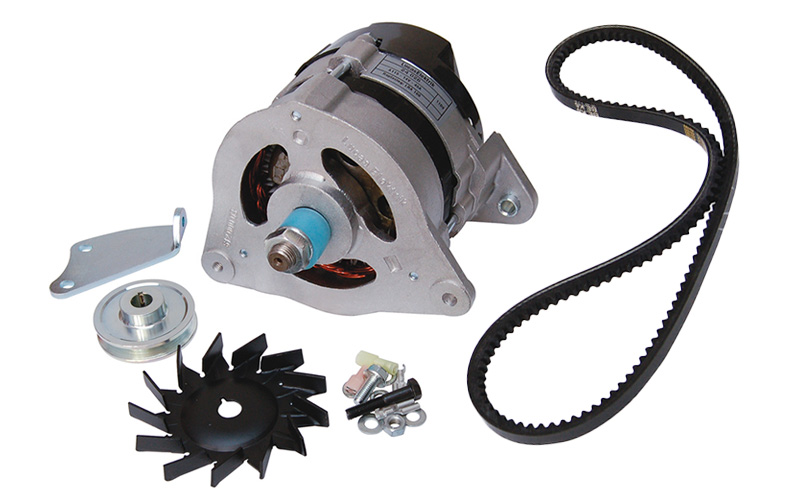
Credit: Photo by Moss Europe Ltd
Alternator or dynamo?
Most classics produced up to the mid-‘Sixties were fitted with a dynamo to generate current and cars built after this usually had a higher output alternator. Unlike a dynamo, which only produces useable power at high revs, an alternator produces a more reliable source of power even at idle. If you’re not bothered about originality and want to run a few accessories, why not carry out an alternator conversion.
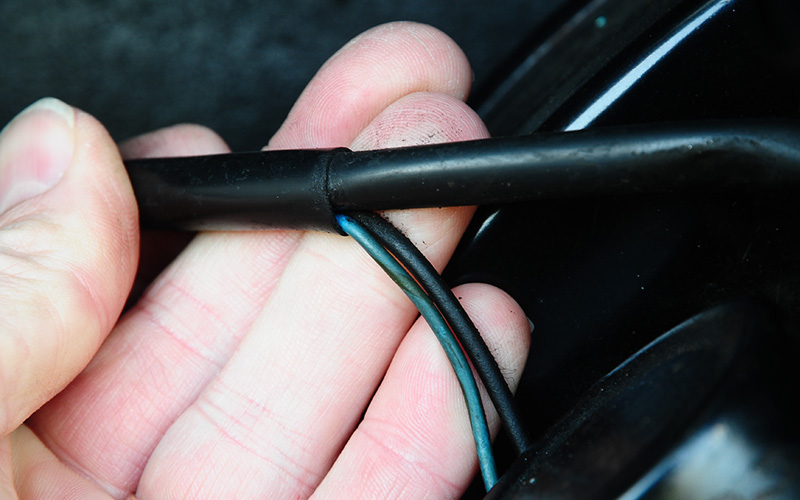
Credit: Photo by Ian Cushway 2020
Problem looms
Inevitably, wiring will become more brittle with age, especially if subjected to high under bonnet temperatures from the engine. Therefore, if you're constantly having to put right electrical glitches then save yourself time and money by investing in a new harness. We sell various looms – with either cloth, PVC or braided coverings – so give us a call to see what's available for your vehicle.
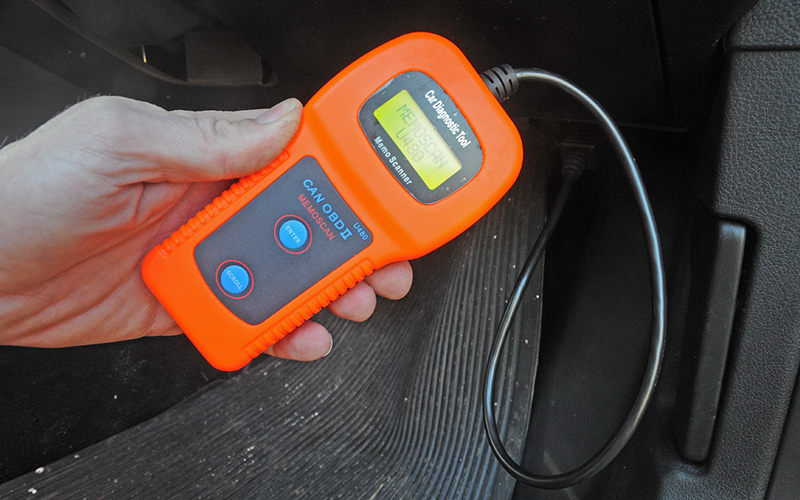
Credit: Photo by Moss Europe Ltd
Socket and see
Most cars from the 1980s have an OBD socket which can help identify a range of problems to do with the car's various systems. Plugging in an inexpensive diagnostics kit will reveal any Diagnostic Trouble Codes, which can be looked up in a table and used to determine the nature of the fault and even allow you to reset dash warning lights. However, it will take more expertise to determine more accurately what the codes mean in order to investigate further.
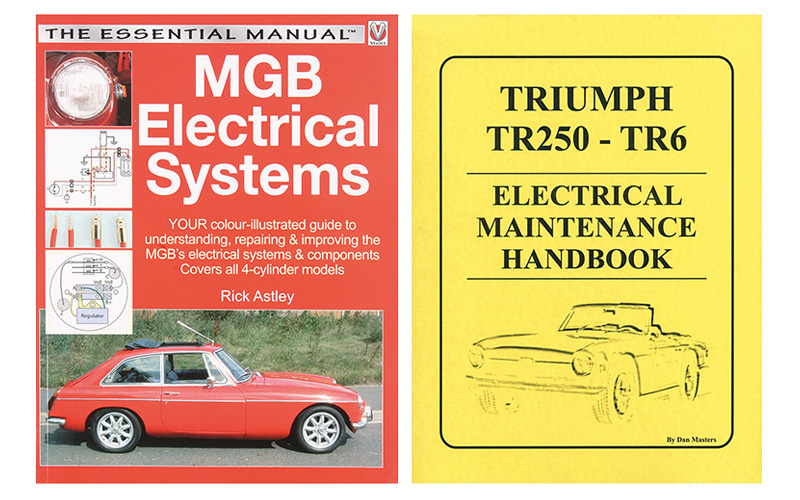
Credit: Photo by Moss Europe Ltd
Read all about it
For a better understanding of your car's electrics, our maintenance-handbooks can help and we stock a range of electrical handbooks, simply select your marque and model.
And finally...
Be patient with electrics, try to understand how your car is wired and work through things logically. You might eventually need to call in the experts, but it's satisfying sorting issues yourself unaided. Especially if you get something working again that's been faulty for ages...

Keep up with all the latest from Moss on our social pages
|
|














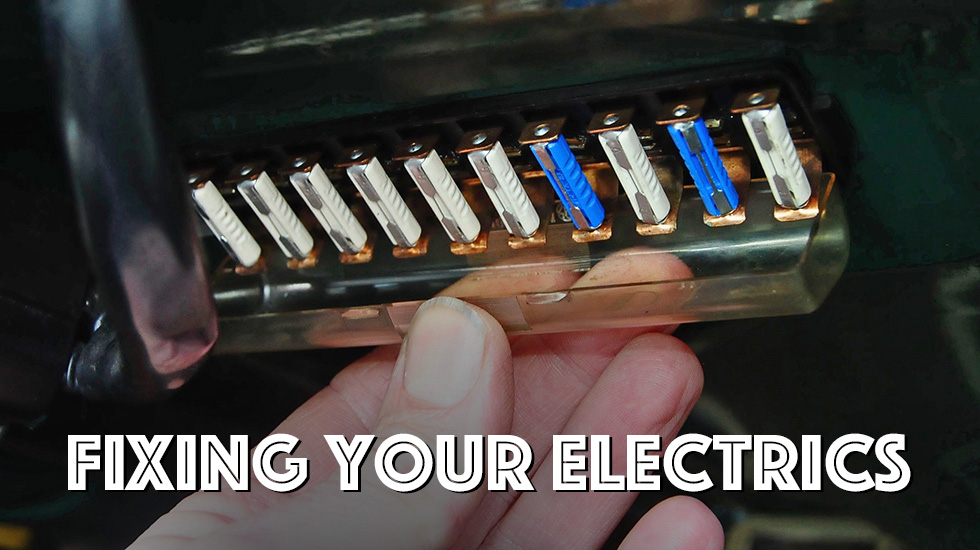



